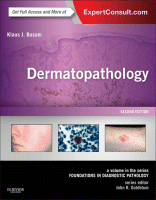Physical Address
304 North Cardinal St.
Dorchester Center, MA 02124

Non-neoplastic Disorders Inflammatory Lesions Conjunctivitis (Infectious and Non-Infectious) Conjunctivitis is an inflammation of the conjunctiva that can manifest in both an acute and chronic form (persisting for 4 weeks or more). The etiology of the inflammation can include allergic, infectious…

Dermatopathology of the nail unit remains a somewhat esoteric and elusive subject for several reasons. Most dermatopathologists have little experience with material from this site, and little has been written comprehensively about this subject. Part of the difficulty stems from…

Tumors metastatic to skin are clinically important because they may represent the first manifestation of an unrecognized internal malignancy or the first evidence of recurrence of a previously treated primary tumor. It is critical to recognize that the tumor is…

Merkel cell carcinoma (MCC) is the eponymous term for primary neuroendocrine carcinoma of the skin, subcutis, or both. Merkel Cell Carcinoma Clinical Findings Merkel cell carcinoma is uncommon. Its annual age-adjusted incidence in the United States was 0.44 in 100,000…

Definition of Terms The term histiocyte refers to a bone marrow–derived progenitor cell that differentiates, depending on the cytokine and growth factor milieu, into a dendritic antigen-presenting cell (Langerhans cell, dermal dendrocyte) or a phagocytic cell (tissue macrophage). Histologic subclassification…

Cutaneous Lymphomas and Pseudolymphomas This chapter deals primarily with primary cutaneous B- and T-cell lymphomas, that is, lymphomas that initially or primarily affect the skin, and reactive lymphoid infiltrates, which may simulate a lymphoma (pseudolymphoma). Later sections of this chapter…

Fibrous, Myofibroblastic, and Fibrohistiocytic Tumors Benign Tumors and Tumor-Like Reactions Dermal Scar and Keloid Clinical Findings The most frequently encountered soft tissue lesion is the dermal scar. It is commonly seen in a postsurgical setting (e.g., re-excision of a tumor)…

The histologic interpretation of pigmented lesions represents one of the most common and at times most difficult challenges in dermatopathology. This chapter introduces readers to basic aspects in the histologic diagnosis of melanocytic lesions. Lentigines and Lentigo-Like Lesions Solar Lentigo…

Adnexal tumors or tumorous proliferations are generally classified according to two principles, (1) benign versus malignant and (2) line of differentiation, that is, which normal cutaneous structure the lesion most resembles (hair follicle, apocrine or eccrine gland, or sebaceous gland).…

Benign Tumors and Tumorous Proliferations of the Epidermis The lesions described herein include noninfectious pseudoepitheliomatous epidermal hyperplasia, benign acanthomas and keratoses, and epidermal nevi. Epidermal proliferations associated with warts or deep fungal infections are described in the chapter on infectious…